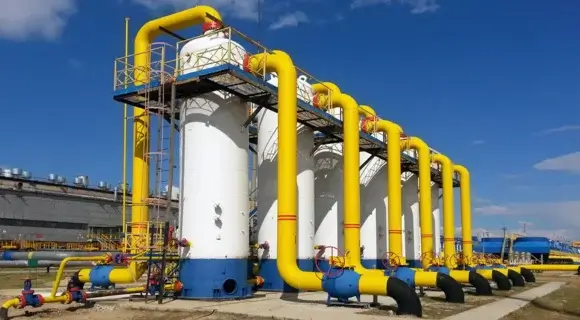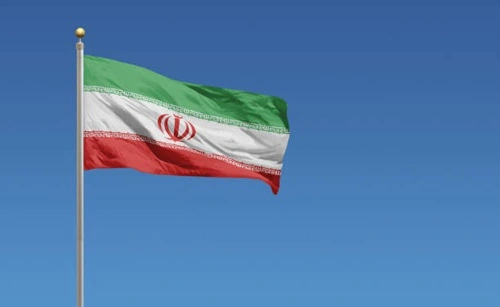Natural gas is important energy for industries worldwide. It has a big contribution to catering for the world’s need in terms of power generation, heating, and industrial uses. In 2024, the world landscape of natural gas supply still remains the few countries dominant for the world share. The following article takes up information on top 10 natural gas producers in the globe, their contributions, regional significances and what are those important factors that build up the production landscape for them.
Countries With Highest Natural Gas Production
1. United States (934,200 million m3 as per 2021):
The US tops in natural gas production with 934,200 million cubic meters in the year 2021. Such huge output raises the US as natural gas production leader. Its copious amount of natural gas plus present out-of-the-box mining processes like hydraulic fracturing have resulted in a growing economy. The US leads in the natural gas industry due to its resources as well as tools. The importance of shale gas production in the US depicted is its importance on global energy. Shale gas was released by fracking. The US became a leader and improved the energy security because of this development. The US sells energy worldwide. How much US natural gas is produced affects global prices and legislation.
You May Also Like: Top 10 Largest Producer Of Hydroelectricity In The World
2. Russia (701,700 million m3 as per 2021):
Russian achieved the second place in natural gas production with 701,700 million m3 in 2021. With its large natural gas reserves, especially in Siberia, the country has boosted the nation’s energy status and productivity. Russia has its natural gas supply to Europe driving the global gas prices creating a lot of strategic importance. The country’s natural gas deposits in Siberia are among the largest, not to mentioned an unexplored one. Russian natural energy assets are huge turning them a worldwide powerhouse.
3. Iran (256,700 million m3 as per 2021):
Iran produces a staggering 256,700 million cubic meters of natural gas each year. It has achieved the third rank. As Asian energy key player Iran’s natural gas reserves have a very important place. Iran has invested their time and energy in exports of natural gas. The whole process is done based on geopolitics and energy policy. Iran’s natural gas reserves have a lot to contribute to the rising geopolitical relevance in Asia. Asian countries and industries benefit a great deal from Iranian energy. Iran leads the energy industry thanks to its constant asset of natural gas. Iran controls natural gas worldwide due to global concerns. Geopolitics impact trade, energy policy, and international relations. Iran’s gas exports require geopolitical flexibility.
4. China (209,200 million m3 as per 2021):
As per the 2021 report China ranks as the fourth-largest natural gas producer. The country has produced 209,200 million m3 of natural gas. China’s has a heavy output of natural gas. Their work in this sector shows its dedication to greener energy and natural gas development. National sustainable energy goals bore the inclusion of air pollution and coal reduction. Energy transition natural gas production get a great contribution from China. The country has diversified its energy to meet environmental concerns and increase energy security. The use of cleaner-burning natural gas instead of coal contributes to this diversification approach. And yes, it has now become China’s energy backbone. China seeks coal alternatives due to air pollution and carbon emissions. Cleaner natural gas helps sustain energy.
5. Qatar (177,000 million m3 as per 2021):
Qatar produces 177,000 million m3 of natural gas annually, sixth worldwide. North Field, the world’s third-largest natural gas field, is famous nationwide. Qatar’s LNG market contributions demonstrate its energy importance. Qatar’s North Field, a massive resource on Qatari and Iranian maritime borders, is its natural gas crown gem. With the third-largest North Field, Qatar dominates world natural gas production. To fulfill local and worldwide demand, Qatar has abundant industrial resources. Qatar affects LNG markets beyond supply. The country dominates LNG with massive infrastructural and technology expenditures. Innovation and infrastructure help Qatar export natural gas, fulfilling global demand for this flexible energy.
6. Canada (172,300 million m3 as per 2021):
Canada produces 172,300 million m3 of natural gas annually, sixth worldwide. Due to its natural gas reserves, it leads the world in energy. Canada’s proximity to the US makes it a major North American energy player. Canada is a global power due to its diverse energy sources. Natural gas deposits abound nationwide. Canada can fulfill its own demands and trade with other nations, making it a dependable energy supply. Canada is more significant in international politics because of its southern neighbor, the US. Canada plays a larger role in North America’s complex energy politics due to its proximity. The US and Canada must go beyond energy exchange. They must link and secure their energy systems.
7. Brazil (152,258 million m3 as per 2023):
Brazilian natural gas production ranks sixth globally with 152,258 million m3 expected in 2023. Brazil’s gas output has grown due to strategic pre-salt mining. Brazil is a South American energy powerhouse due to its aggressive energy infrastructure expansion and exploration. Brazil became a natural gas giant using pre-salt resources. Treasures under high salt layers in the country’s offshore basins appear potential. Brazilian pre-salt exploration has globalized natural gas supplies. Brazil aims regional energy dominance through widespread exploration. Brazil finds and uses new natural gas resources thanks to proactive exploration and technology. With rising output, Brazil leads South American energy exploration and development.
8. Australia (147,200 million m3 as per 2021):
Australia generated 147,200 million m3 of natural gas in 2021, sixth worldwide. Its vast natural gas reserves and LNG technological advancements make it vital to the global energy sector. With this strategic partnership, Australia has become a global energy leader and Asia-Pacific LNG provider. Australia’s massive gas reserves can be used. Regional supplies allow the US to be the world’s largest energy market. Australia harvests and uses resources efficiently to maximize natural gas. Improving LNG technology will boost Australia’s energy edge. Liquefied natural gas can be exchanged nationwide owing to cutting-edge technology. This strategy improves transportation in Australia and global natural gas markets.
9. Argentina (130,000 million m3 as per 2023):
Tenth in the world, Argentina estimated to produce 130,000 million m3 of natural gas in 2023. Argentina’s natural gas boom is driven by the Vaca Muerta formation’s tremendous shale gas potential. Energy self-sufficiency and natural gas’s greener status impact Argentina’s worldwide market position. In order to reduce foreign dependency, Argentina seeks to become energy self-sufficient. The government intends to supply most of its energy demands domestically using its enormous shale gas resources, improving energy security. These projects make Argentina energy self-sufficient and protect it from worldwide supply interruptions. Like other nations, Argentina supports natural gas as greener energy. The nation supports renewable energy for environmental reasons. Argentina pushes cleaner natural gas to fight environmental issues and join the energy revolution.
10. Saudi Arabia (117,300 million m3 as per 2021):
Saudi Arabia produced 117,300 million m3 of natural gas in 2021, eleventh and last in Asia. Saudi Arabia, rich in oil, is diversifying with natural gas. This strategic move shows the nation’s commitment to adapting to energy changes and its global natural gas market position. Recent natural gas developments show Saudi Arabia’s energy diversification. Cleaner, more flexible natural gas drives diversification.
Conclusion:
For these aforementioned nations, where most of the world’s oil and natural gas producers are located, production of oil and exportation of natural gas becomes crucial in meeting world energy demands, shaping the regional energy dynamics, and having leverage over the direction of the market. In the ever-changing world grappling with the energy transition and sustainability to ensure a better future for other generations, these realities by the leading natural gas producers shall remain at the core in the global energy landscape.
FAQs
Q1. What are the major uses of natural gas?
Ans: Natural gas is used for various purposes, including:
- Electricity generation: Many power plants use natural gas to produce electricity.
- Heating: It’s commonly used for heating homes, water, and even for cooking.
- Industrial purposes: It is used as a fuel in various industries such as manufacturing, food processing, and chemical production.
- Transportation: Natural gas can be used as a fuel for vehicles, especially in the form of compressed natural gas (CNG) or liquefied natural gas (LNG).
Q2. What are the environmental impacts of natural gas production?
Ans: Natural gas is considered a cleaner burning fossil fuel than coal, but it still produces greenhouse gas emissions. There are also environmental concerns associated with the process of extraction, such as methane leaks and water contamination.
Q3. How is natural gas transported?
Ans: Natural gas is primarily transported via pipelines over long distances. Liquefied natural gas (LNG) is also a method, where the gas is supercooled to a liquid state for transport by ship.
Q4. What is the future outlook for natural gas production?
Ans: The future outlook for natural gas production is positive, with increasing demand globally. Advances in extraction technologies and new discoveries are expected to sustain production growth. However, there are also growing concerns about environmental impacts and the need for a transition to renewable energy sources.
Q5. How does the natural gas industry impact the global economy?
Ans: The natural gas industry significantly impacts the global economy by providing jobs, contributing to energy security, and influencing geopolitical dynamics. Countries rich in natural gas resources can leverage their supply for economic and strategic advantages.
Q6. What role does natural gas play in the transition to renewable energy?
Ans: Natural gas is often considered a bridge fuel in the transition to renewable energy because it produces fewer emissions than coal and oil. It can complement renewable energy sources by providing a reliable backup when solar and wind power are insufficient.

Brandon is the cheif editor and writer at WorldUnfolds.com. With a passion for storytelling and a keen editorial eye, he crafts engaging content that captivates and enlightens readers worldwide.

























